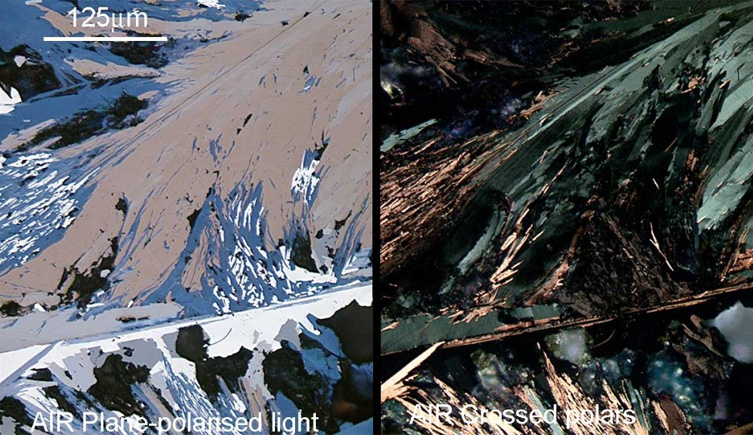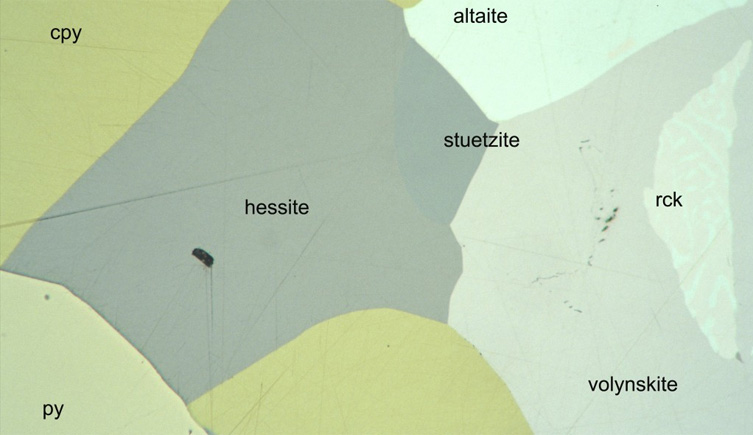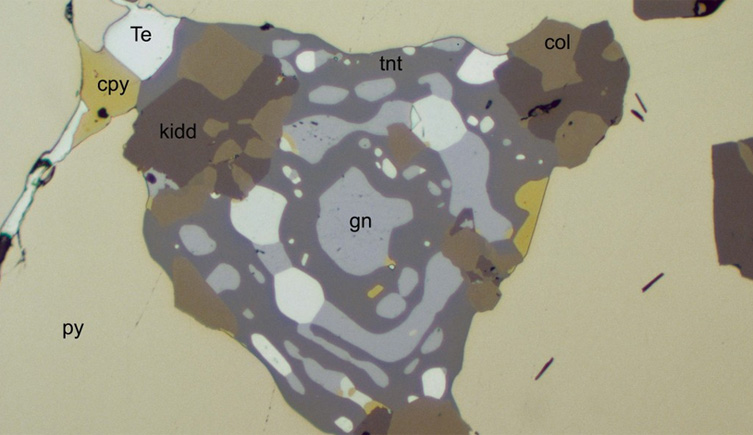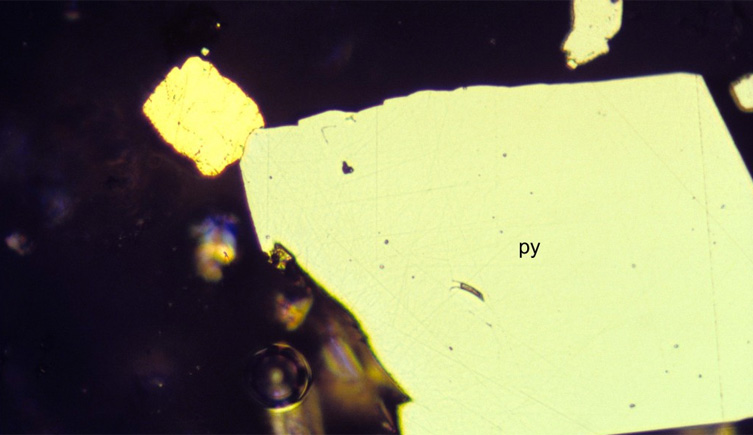Ore mineralogy laboratory

Nukundamite, covellite and pyrite in polished section under plane-polarised light (l) and crossed polars (r).
Mineral characterisation plays an important role in generating new mineral descriptions and in consultancy projects.
Ore minerals such as sulphides, sulphosalts and oxides are examined in polished blocks or thin sections to determine both their qualitative and quantitative properties.
Qualitative properties
- mineral identification
- grain relationships
- textures
Quantitative properties
- reflectance
- microhardness

Pyrite, Chalcopyrite, Hessite, Stützite, Rucklidgeite, Volynskite, Altaite
Locality: Campbell Mine (Campbell shaft), Bisbee, Warren District, Mule Mts, Cochise Co., Arizona, USA
Reflected light digital image from photomicrograph transparency. The Campbell Mine yielded a host of interesting minerals, sometimes in complex relationships, as seen here, with sulphides and tellurides of various compositions.
Horizontal field around 300 microns.
View an article on the Campbell orebody
Optical data
The Museum acquired an instrument with a grating monochromator in the 1990s, and a J & M Tidas diode array spectrometer in 2006. These have been used to gather optical data on more than 120 new minerals and produce the 2nd and 3rd issues of the Quantitative Data File for Ore Minerals, edited by A J Criddle and C J Stanley, 1984 and 1993.
An updated database of optical data is available online for the four wavelengths (470nm, 546nm, 589nm, and 650nm) recommended by the Commission on Ore Mineralogy of the International Mineralogical Association.

Kiddcreekite, Colusite, Tennantite, Tellurium, Galena, Pyrite, Chalcopyrite
Locality: Campbell Mine (Campbell shaft), Bisbee, Warren District, Mule Mts, Cochise Co., Arizona, USA.
Digital image from a reflected light photomicrograph (horizontal field ~ 300 microns) oil immersion, E.958. 2500 Level 178-1. Campbell Orebody.
A complex intergrowth of kiddcreekite, colusite, tennantite, galena, native tellurium, chalcopyrite, with a trace of altaite in pyrite. This image was used on promotional material for the 2nd edition of the Quantitative Data File for Ore Minerals in 1986.
Laboratory history
The late Alan Criddle established the laboratory at the end of the 1970s. Initially it contained a microscope equipped with a line interference filter measuring at 10nm intervals in the visible spectrum from 400 to 700nm.

Gold, Pyrite, Quartz
Locality: Kundana mines, Kalgoorlie-Boulder Shire, Western Australia, Australia
A digital image of a reflected light photomicrograph (oil immersion)with horizontal field about 220 microns.
A section through a cube of gold perched on a grain of pyrite now included in quartz. A similar photo of the same area taken by student Stephen Knipe was included in New Scientist magazine in 1991.
The specimen was collected on an overseas consultancy project in July 1989.